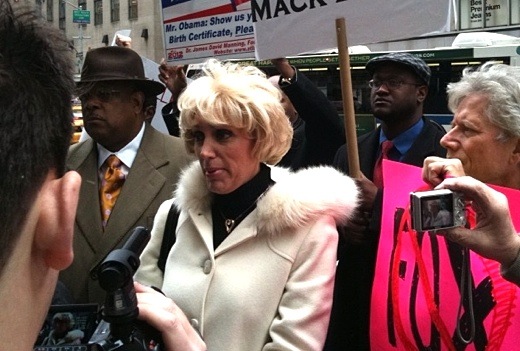By Carl Folke on 13 December 2010 in Seed Magazine -
(http://seedmagazine.com/content/article/on_resilience)

Image above: A tree straddles two realities. From (http://refusetobeupset.com/resillience-adapting-to-hardships/).
But when the piece arrived in Merion, Barnes wrote to Matisse explaining an unfortunate oversight: His collaborators had taken the wrong measurements, so the painting did not fit on the gallery wall.
The difference in size was marginal, and Matisse could easily have tweaked the triptych to fit the wall, a technical fix.
But instead he rented the cinema for another 12 months to complete a new painting with the right dimensions. Moreover, since he felt that mindless duplication was not real art, Matisse considerably changed the concept, effectively creating a whole new design.
And in this process of reworking the piece, as he experimented with forms that would capture the dancers’ rhythmic motion, he invented the famous “cut outs” technique (gouaches découpés), what he later labeled “painting with scissors.”
Whether consciously or unconsciously, Matisse turned a mistake into an opportunity for innovation. The new triptych not only pleased Barnes, but also served as the stylistic starting point for what would later become Matisse’s most admired works.
The French master’s ad hoc ingenuity captures the essence of an emerging concept known as resilience. Loosely defined, resilience is the capacity of a system—be it an individual, a forest, a city, or an economy—to deal with change and continue to develop.
It is both about withstanding shocks and disturbances (like climate change or financial crisis) and using such events to catalyze renewal, novelty, and innovation. In human systems, resilience thinking emphasizes learning and social diversity.
And at the level of the biosphere, it focuses on the interdependence of people and nature, the dynamic interplay of slow and gradual change. Resilience, above all, is about turning crisis into opportunity.
Resilience theory, first introduced by Canadian ecologist C.S. “Buzz” Holling in 1973, begins with two radical premises. The first is that humans and nature are strongly coupled and coevolving, and should therefore be conceived of as one “social-ecological” system.
The second is that the long-held, implicit assumption that systems respond to change in a linear—and therefore predictable—fashion is altogether wrong. In resilience thinking, systems are understood to be in constant flux, highly unpredictable, and self-organizing with feedbacks across multiple scales in time and space. In the jargon of theorists, they are complex adaptive systems, exhibiting the hallmark features of complexity.
A key feature of complex adaptive systems is their ability to self-organize along a number of different pathways with possible sudden shifts between states: A lake, for example, can exist in either an oxygenated, clear state or an algae-dominated, murky one.
A financial market can float on a housing bubble or settle into a basin of recession. Conventionally, we’ve tended to view the transition between such states as gradual. But there is increasing evidence that systems often don’t respond to change in a smooth way: The clear lake seems hardly affected by fertilizer runoff until a critical threshold is passed, at which point the water abruptly goes turbid.
Resilience science focuses on these sorts of regime shifts and tipping points. It looks at incremental stresses, such as accumulation of greenhouse gases in combination with chance events—things like storms, fires, even stock market crashes—that can tip a system into another equilibrium state from which it is difficult, if not impossible, to recover.
How far can a system be perturbed before this shift happens? How much shock can a system absorb before it transforms into something fundamentally different? How can active transformations from an undesirable social-ecological state into a better one be orchestrated? That, in a nutshell, is the essence of the resilience challenge.
The resilience line of thinking helps us avoid the trap of simply rebuilding and repairing flawed structures of the past—be it an economic system overly reliant on risky speculation or a health-care system that splits a nation at its financial seams and yet fails to deliver adequate coverage.
Resilience encourages us to anticipate, adapt, learn, and transform human actions in light of the unprecedented challenges of our turbulent world.
Arguably the most urgent of these tasks is the nested set of global environmental crises we now confront: climate change, ocean acidification, pandemics, water scarcity, overfishing, and loss of ecosystem services.
The tremendous acceleration and expansion of the human enterprise, especially since World War II, is pushing the Earth dangerously close to the limits of the human activity it can sustain, and beyond which abrupt environmental change is increasingly likely.
Obviously, global sustainability demands that humanity remain within these planetary operating boundaries. The relevant question then becomes: What will it take?
To begin, we need to put our role on this planet in perspective by placing humanity and the Earth’s systems in a geological context. If you graph the range of global temperature variations over the past 100,000 years, most of it forms a wild, erratic sawtooth pattern as climatic variations have at turns scorched or frozen the world.
But, about 10,000 years ago, temperature variation stabilized, and we entered what geologists call the Holocene epoch. This is the stable period during which agriculture and complex societies, including our own, developed and flourished.
Considering the fact that our modern globalized society has developed within these unusually stable conditions, it might come as no surprise that today’s hospitable environment is often taken for granted in investment decisions, political actions, and international agreements.
Before the Holocene period, the climatic conditions on Earth were likely too unpredictable—with temperatures fluctuating wildly—for humans to settle down and develop in one place.
Clearly, the only rational strategy now is to try and ensure that we remain in the human-friendly Holocene phase, that human development does not kick us into an unknown geological era.
The big challenge for humanity, then, is to begin working with the processes of the biosphere, instead of against them. This is not merely an environmental strategy—it is about sustaining our own development on planet Earth.
And there are countless pathways for such development, as long as the biophysical preconditions for a functioning Earth system are respected.
This global resilience perspective stands in stark contrast to development paradigms and global policies that treat environmental issues as external to society, that offer only minor adjustments of current behaviors, and that tend to concentrate on technical quick fixes to get rid of the problems.
It also runs counter to the philosophies of many traditional conservationists; they tend to see the world as environmentally stable, and seek to “save the environment” by limiting or excluding human activity. Both perspectives treat human and nature as two separate entities.
Embarrassingly, in a few generations we seem to have created a mind-set that either assumes that the economy is at the very center of the universe, or that nature needs to be saved from us humans. This is a dangerous mental trap, one we must escape as soon as possible in order to seed a prosperous future for humanity.
Luckily, the climate crisis has kick-started a new kind of mental revolution: We are slowly reconnecting with the planet. We are beginning to recognize that humans are part of the biosphere, simultaneously shaping it and fundamentally dependent on its functioning.
This thinking is present in an accumulating body of work on ecosystem services, like the 2005 UN Millennium Ecosystem Assessment, that surveys the capacity of the world’s natural systems to support human development.
Resilience consists of three features—persistence, adaptability, and transformability—each interacting from local to global scales. How can societies persist and adapt in order to avoid tipping over critical thresholds into undesirable situations?
When a shift into an undesired regime appears inevitable (or has already occurred and is irreversible), how can social-ecological systems transform to fit the new circumstances? One example of such “transformability” is the recent shift in governance of the Great Barrier Reef in Australia.
Here the challenges of climate change, eutrophication, and overfishing have led Australians to begin treating the reef as an invaluable, embedded part of their economy, and to begin managing it through collaborations between citizens, scientists, and policymakers.
The current search for alternative energy sources to build a society that is less dependent on fossil fuels is another example. Overturning petroleum—the very foundation of human development thus far—will require unprecedented creativity and social innovation. In other words, it will demand a new ethic of social-ecological resilience.
Don’t be too alarmed by unexpected events, be prepared for them, and make use of them to improve negative circumstances. These actions will require trust and collective effort, a theme brought into focus with the awarding of the 2009 Nobel Prize in Economics to Elinor Ostrom, a key player in resilience thinking.
Ostrom’s work gives evidence that grassroots, cooperative action can be enormously successful when it comes to caring for public commons—resources that benefit all, and that are traditionally vulnerable to exploitation.
This message is at the core of the resilience framework. That the global community is now recognizing it provides hope that resilience will be the new lens through which we face the turbulence, and opportunity, of the coming decade. Like that great French painter, with the right vision, we too can adapt to adversity, rethink our approach—and perhaps create a masterpiece in the process.
• Carl Folke is the science director of the Stockholm Resilience Centre at Stockholm University and director of Beijer Institute of the Royal Swedish Academy of Sciences.
.







